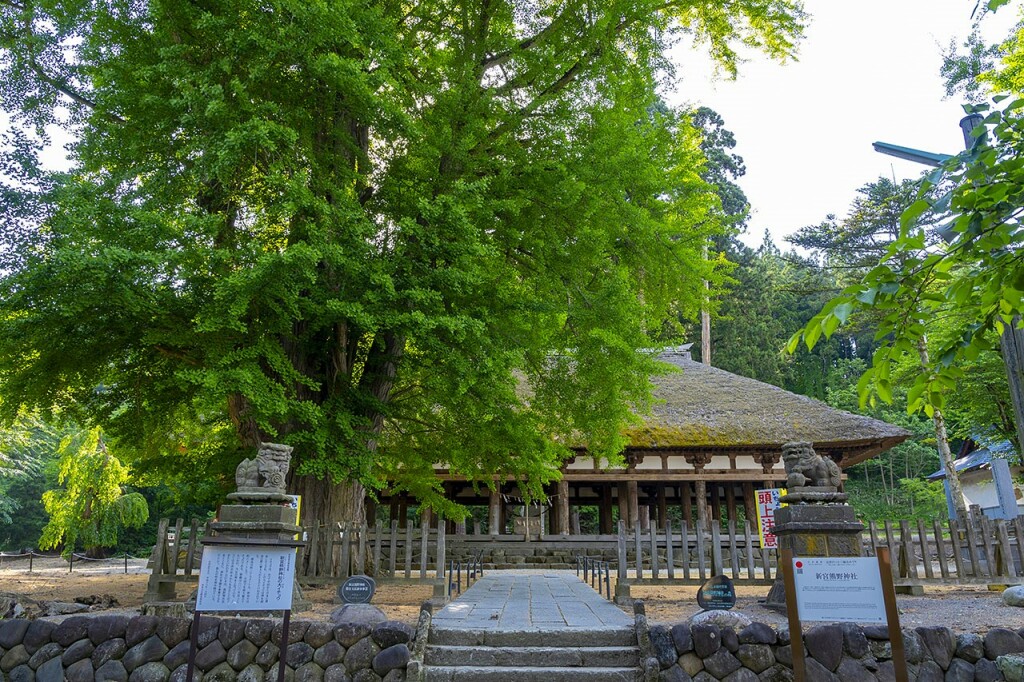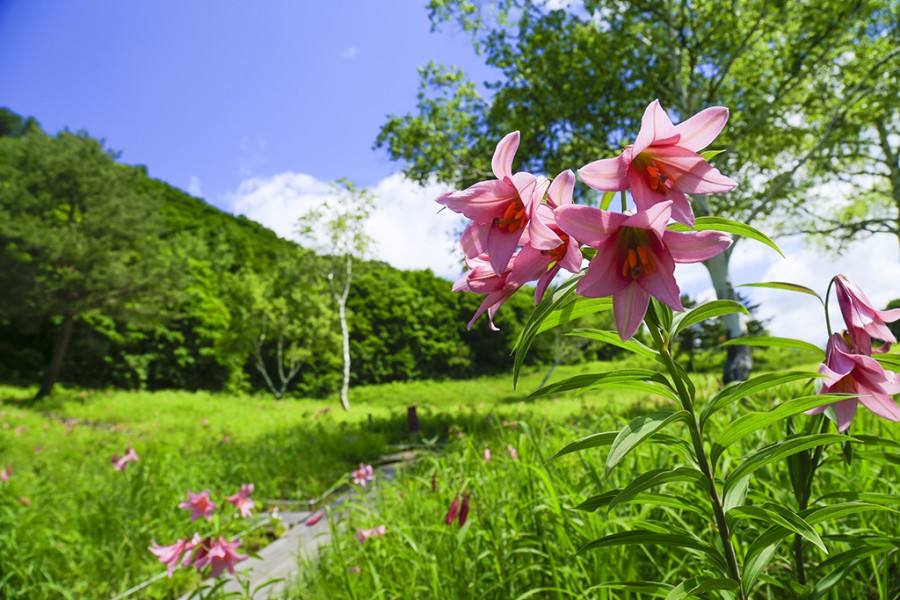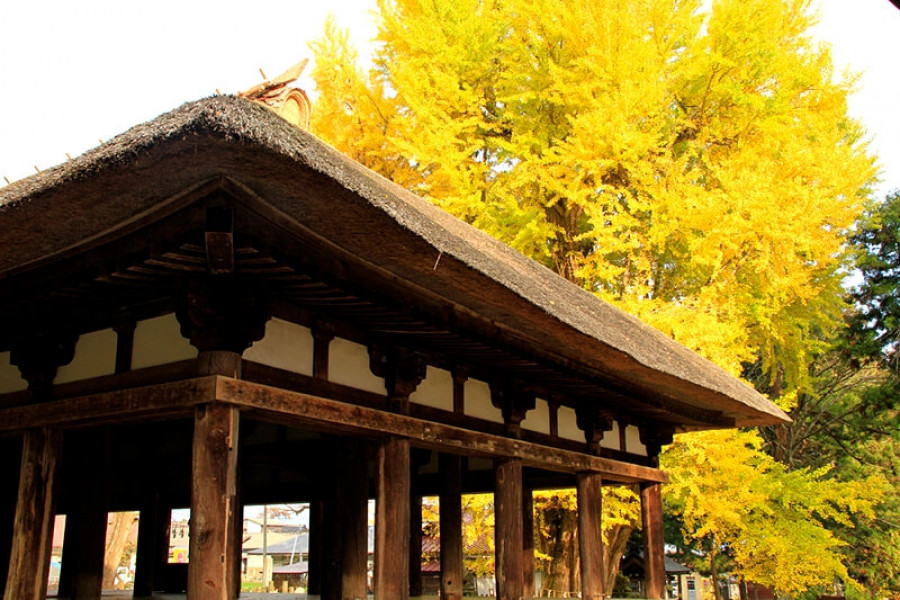Built in 1055, the Nagatoko is Shingu Kumano Shrine's worship hall and translates to “long floor”. It is designated as a Nationally Important Cultural Asset. Its thatched roof main structure was built between the Heian period and the Kamakura period and is supported by 44 massive pillars, each one 45 cm in diameter. It is a large, open stage with no walls, said to have been used for ascetic training by priests, as well as kagura dance festivals.

Housed inside a nearby large wooden frame is the shrine bell, which visitors to the shrine are welcome to hit with a wooden rod. There is also a famous copper pot in which, allegedly, rice was rinsed before being offered to the gods; the pot was designated as an Important Cultural Property in 1959. This treasure is housed at the shrine along with many others and is on display for visitors along with national and prefectural designated cultural assets.

Also not to be missed is the lion statue in the center of the treasure hall. It is known as a guardian of wisdom: a local legend says that if you can pass under the belly of the lion, your wisdom will blossom. It is a popular place for students to visit before the exam season and even politicians before election season.
Come autumn, the magnificent 800-year-old ginkgo tree at the site is bathed in yellow, contrasting beautifully with the Nagatoko. This ancient tree has also been designated as a Natural Monument of Kitakata City. In November each year, you can even see a special illumination of the ginkgo tree for a limited time.











